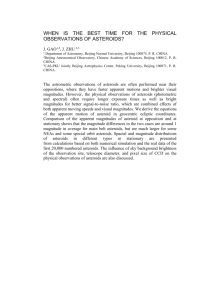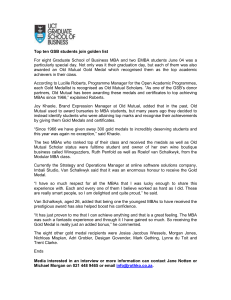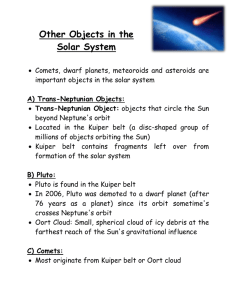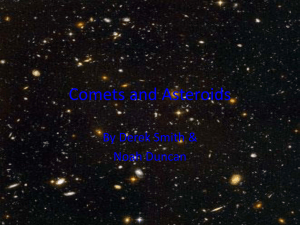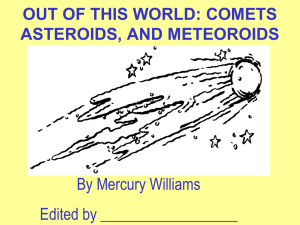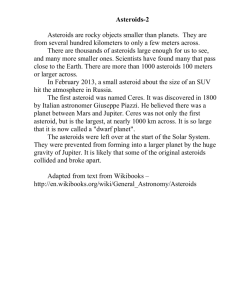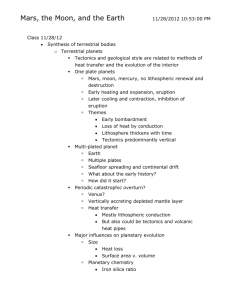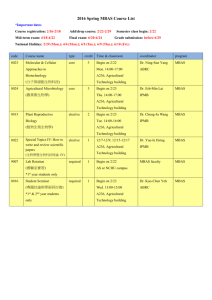size distribution for sub-km main belt asteroids deduced from subaru
advertisement
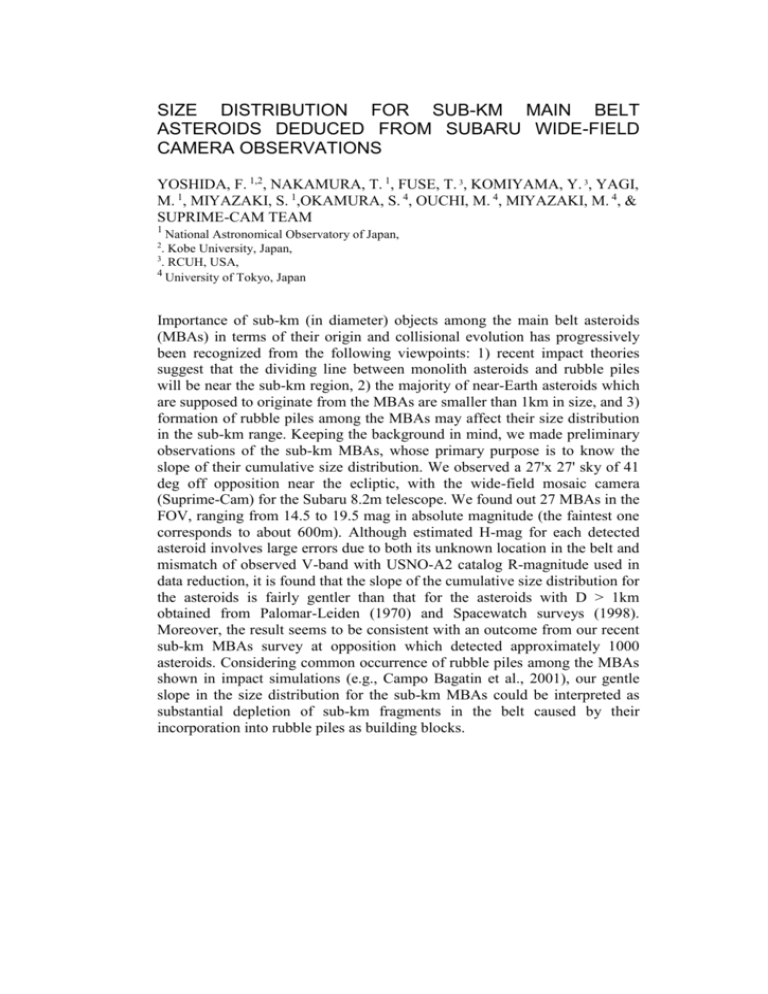
SIZE DISTRIBUTION FOR SUB-KM MAIN BELT ASTEROIDS DEDUCED FROM SUBARU WIDE-FIELD CAMERA OBSERVATIONS YOSHIDA, F. 1,2, NAKAMURA, T. 1, FUSE, T. 3, KOMIYAMA, Y. 3, YAGI, M. 1, MIYAZAKI, S. 1,OKAMURA, S. 4, OUCHI, M. 4, MIYAZAKI, M. 4, & SUPRIME-CAM TEAM 1 National Astronomical Observatory of Japan, . Kobe University, Japan, 3 . RCUH, USA, 4 University of Tokyo, Japan 2 Importance of sub-km (in diameter) objects among the main belt asteroids (MBAs) in terms of their origin and collisional evolution has progressively been recognized from the following viewpoints: 1) recent impact theories suggest that the dividing line between monolith asteroids and rubble piles will be near the sub-km region, 2) the majority of near-Earth asteroids which are supposed to originate from the MBAs are smaller than 1km in size, and 3) formation of rubble piles among the MBAs may affect their size distribution in the sub-km range. Keeping the background in mind, we made preliminary observations of the sub-km MBAs, whose primary purpose is to know the slope of their cumulative size distribution. We observed a 27'x 27' sky of 41 deg off opposition near the ecliptic, with the wide-field mosaic camera (Suprime-Cam) for the Subaru 8.2m telescope. We found out 27 MBAs in the FOV, ranging from 14.5 to 19.5 mag in absolute magnitude (the faintest one corresponds to about 600m). Although estimated H-mag for each detected asteroid involves large errors due to both its unknown location in the belt and mismatch of observed V-band with USNO-A2 catalog R-magnitude used in data reduction, it is found that the slope of the cumulative size distribution for the asteroids is fairly gentler than that for the asteroids with D > 1km obtained from Palomar-Leiden (1970) and Spacewatch surveys (1998). Moreover, the result seems to be consistent with an outcome from our recent sub-km MBAs survey at opposition which detected approximately 1000 asteroids. Considering common occurrence of rubble piles among the MBAs shown in impact simulations (e.g., Campo Bagatin et al., 2001), our gentle slope in the size distribution for the sub-km MBAs could be interpreted as substantial depletion of sub-km fragments in the belt caused by their incorporation into rubble piles as building blocks.


